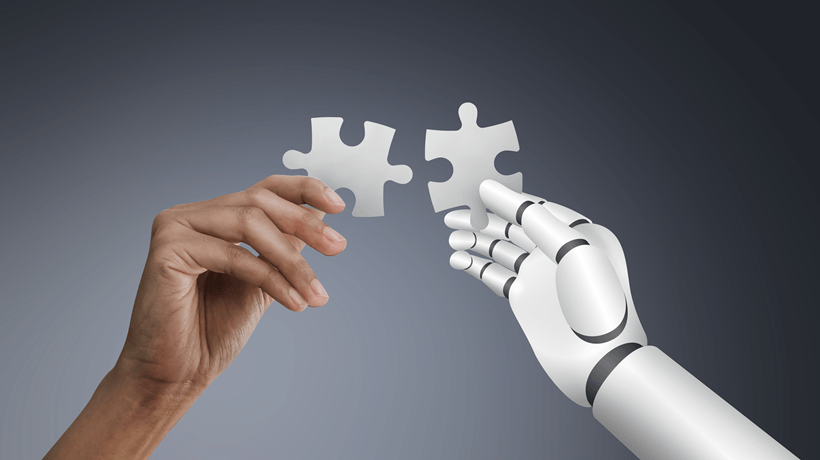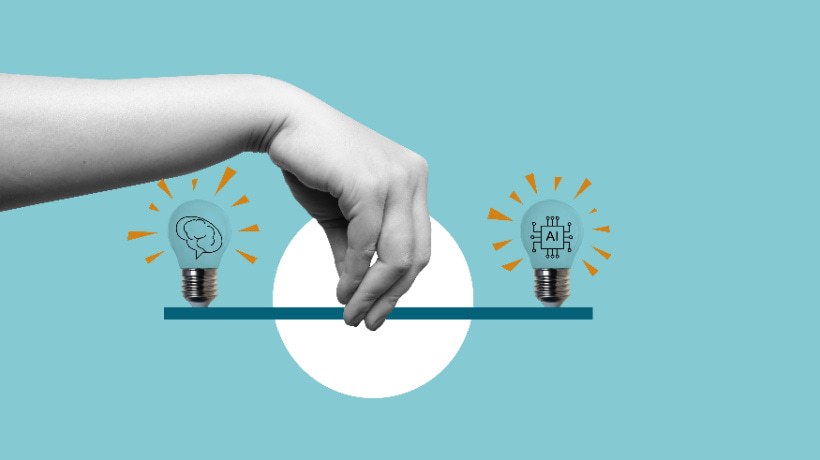Human Insight And Artificial Understanding: The Great Convergence Of Human And Machine Understanding
Education has always been shaped by its tools. The printing press democratized access to knowledge, the computer redefined how it was processed, and digital learning made it borderless. Yet Artificial Intelligence (AI) represents a more profound transformation. It not only assists in teaching, but also learns alongside the learner. It adapts, responds, and refines itself based on patterns of human behavior. For the first time, an educational technology is capable of not only storing and delivering knowledge but also participating in the process of understanding.
This evolution has brought education to a critical juncture. AI can now analyze how students learn, predict what they need next, and provide individualized support at a scale no human educator could achieve alone. At the same time, this new intelligence lacks the very essence of what makes learning meaningful: context, empathy, and purpose. The future of education will not be defined by machines that teach or by humans who resist them. It will be defined by how both can think together.
What AI Understands And What It Never Will
Artificial Intelligence is a master of association. It detects patterns in vast datasets and transforms them into actionable insights. It identifies where students struggle, which concepts require reinforcement, and which learning paths lead to success. Yet its understanding remains mechanical. It knows that an answer is likely, but it does not know why it matters. It can predict learning outcomes, but cannot sense the personal triumph of comprehension or the frustration of intellectual struggle.
Human understanding, by contrast, is interpretive. It is rooted in experience, emotion, and meaning. Educators bring not just expertise but also empathy: the ability to read subtle cues, encourage perseverance, and frame mistakes as opportunities. Human understanding is inherently moral; it asks not only whether something can be done, but whether it should be. The strength of education lies in these interpretive capacities, and no algorithm can reproduce them. The challenge for modern education is not to compete with artificial understanding but to integrate it without losing the humanity that gives learning its purpose.
The Educator's Evolving Role
The emergence of artificial understanding does not diminish the teacher's importance; it redefines it. The educator of the AI era is not merely a transmitter of information but a conductor of cognition. Teachers now orchestrate multiple forms of intelligence, harmonizing human insight with algorithmic assistance. AI can automate routine tasks such as grading, analytics, and adaptive recommendations, freeing educators to focus on creativity, mentorship, and ethical reflection.
This new role requires a shift in mindset. Teachers must see AI not as an intrusion into their professional identity but as an amplifier of it. The best educators will use AI to deepen their impact, not to outsource it. They will guide students through a more personalized learning landscape while ensuring that technology remains grounded in empathy and human values. In doing so, they preserve the relational essence of education while embracing its technological possibilities.
Co-Intelligence In Practice
The convergence of human and Artificial Intelligence creates moments where neither could succeed alone. Consider a scenario where a student struggles with a complex subject despite consistent effort. An AI system tracks their progress and notices a specific pattern: the student excels at certain types of problems but consistently falters at others. The system adapts, offering targeted practice focused on the specific area of difficulty. It provides immediate feedback on each attempt, identifying precisely where reasoning breaks down.
Yet the AI cannot see what an educator notices during interaction: the student is approaching the subject with an entirely incorrect mental framework. They are trying to memorize patterns instead of understanding principles. The educator asks a question that reframes the entire subject, helping the student see it not as a collection of rules but as a logical system with internal coherence. This single intervention alters how the student perceives the material.
Over time, the AI continues to adapt practice based on performance data, but the student now approaches it with a fundamentally different understanding. Human intervention provides conceptual clarity; AI provides the repetition and variation needed to master it. When the student finally achieves understanding, the AI logs progress. But only the educator comprehends what that progress means: a transformation from confusion via human insight.
This is co-intelligence. Neither could have produced the transformation alone. The AI offered precision and scale, identifying exactly where understanding faltered and adapting in real time. The educator offered insight and reframing, helping the student see the subject in a way that made sense. Together, they created a learning experience that was both personalized and profound.
Designing For Co-Intelligence
Instructional Design now operates at two interconnected levels: human cognition and artificial cognition. The first focuses on emotional, psychological, and developmental growth. The second focuses on how AI systems interpret learner data to make adaptive decisions. When aligned intentionally, these layers form what can be called co-intelligent design.
In this model, the AI component analyzes engagement, pace, and performance, providing tailored feedback to students. Meanwhile, the educator interprets those insights, contextualizing them within a larger human narrative. A sudden drop in engagement might signal to the AI that the difficulty level needs adjustment. To the educator, that same pattern might reveal personal struggles, a shift in motivation, or the need for different encouragement. The AI responds with algorithmic precision; the human responds with contextual wisdom.
The result is an experience that is both personalized and purposeful. It is no longer enough for a course to be well-structured; it must also be engaging. A co-intelligent course does not simply adjust to a learner's behavior. It evolves with them, interpreting not just what they do but who they are becoming as thinkers.
This approach requires educators to understand not only how students learn but also how AI learns. Knowing how algorithms interpret and apply data allows instructors to design experiences that complement, rather than conflict with, machine reasoning. In essence, Instructional Design becomes the art of balancing two minds: one human, one artificial, each enhancing the other's strengths.
The Risk Of Asymmetry
While collaboration between humans and machines holds extraordinary potential, an imbalance poses real danger. When AI dominates the learning environment, education risks becoming efficient but soulless. Students may achieve outcomes without experiencing growth. They complete modules, pass assessments, and earn credentials, all while being shaped by an invisible system optimizing for metrics that may not align with genuine understanding. Learning becomes transactional rather than transformational.
Conversely, when educators ignore AI, the learning process can remain compassionate but inefficient, failing to meet the needs of diverse learners in a digital age. The instructor who refuses to use adaptive tools may offer profound human insights to students who can keep pace, while others fall behind without the individualized support they need. Good intentions cannot scale without intelligent systems to extend their reach.
Actual progress depends on equilibrium. Artificial understanding should serve as a mirror, not a master. It should inform human judgment, not replace it. Maintaining this balance requires ethical governance and transparency. Institutions must establish clear frameworks for how AI decisions are made, how data is used, and how human oversight is preserved. Students should understand when they are interacting with AI and have recourse to human judgment when algorithmic decisions feel wrong. The value of AI lies not in its autonomy but in its alignment with human intention.
The Student As Co-Thinker
In this new landscape, students must also evolve. The learner of tomorrow is not simply a recipient of knowledge but a collaborator in cognition. Working alongside AI requires a set of literacies that extend beyond content mastery. Students must learn to question outputs, recognize algorithmic limitations, and apply critical reasoning to digital insights. They must understand that AI can inform their thinking but not define it.
When students learn to use AI responsibly, they become more reflective, not less. They begin to see learning as a shared dialogue between human curiosity and Artificial Intelligence. In this sense, AI becomes a tool for metacognition, enabling learners to understand their learning process better. A student who receives AI-generated feedback on written work must still decide which suggestions align with the intended meaning and which distort it. They must evaluate whether the AI understood their argument or optimized for clarity at the expense of nuance. This constant negotiation between human intention and algorithmic suggestion develops judgment.
The goal is not to create dependence on technology but to cultivate independence within it. By teaching students to think with machines, educators prepare them to thrive in an intellectual ecosystem where adaptation, not memorization, defines success.
Toward A Shared Intelligence
The most transformative outcome of this era will be the emergence of shared intelligence, a symbiotic relationship between human insight and artificial understanding. Together, they can create learning experiences that are both precise and profound. AI brings scale, speed, and analytical power. Humans bring empathy, ethics, and imagination. When these capacities converge, education becomes not only more effective but also more deeply human.
The future of teaching will not hinge on which form of intelligence prevails but on how well they collaborate. The ultimate purpose of AI in education is not to replace human wisdom, but to extend it: to give educators the means to see further and students the opportunity to think more deeply.
We must be clear about what we are building. The promise of shared intelligence is not merely better test scores or faster learning. It is the possibility of education that truly sees each learner, that adapts not just to what they know but to who they are. It is the chance to scale empathy, to make personalized attention sustainable, to ensure that no student is invisible in a crowded classroom or lost in a massive online course. Shared intelligence means that the benefits of individualized instruction (the adaptation, the patience, the tailored explanation) can reach thousands, while the wisdom that comes only from human experience (the encouragement, the reframing, the moral guidance) remains irreplaceable.
This is not a distant future. It is happening now, in classrooms where teachers use AI to identify struggling students before they give up, where adaptive systems provide practice tailored to individual needs, where educators reclaim time once spent on administrative tasks and invest it in the human work that machines cannot do. The question is not whether this convergence will continue, but whether we will shape it intentionally or let it unfold by accident.
As education enters this new epoch, one truth remains constant: learning has always been a shared act of discovery. Now, the circle of discovery has widened to include new partners in thought. When human insight meets artificial understanding, the result is not competition but harmony: the creation of an educational experience that honors both what makes us human and what enables us to build tools that amplify our humanity. The accurate measure of success will not be whether machines can teach, but whether they help us become better teachers, better learners, and ultimately, better thinkers. Ultimately, intelligence (whether human or artificial) matters only to the extent that it helps us understand ourselves and the world more fully.









